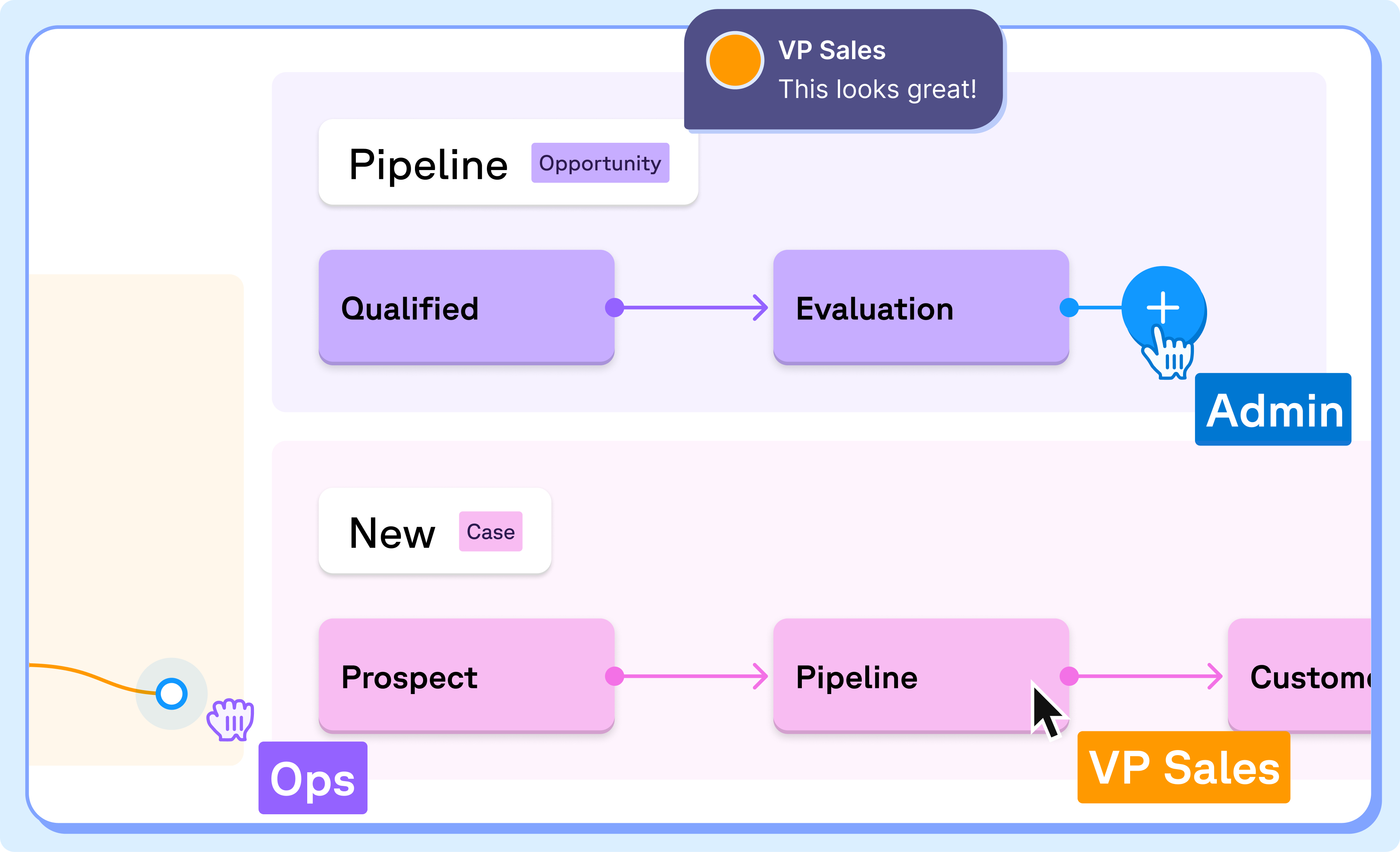
Salesforce Documentation empowers everyone from seasoned sales reps to new admins to navigate your CRM effectively. It helps to optimize your system, maintain data integrity, and troubleshoot issues with greater ease. And it makes Salesforce easier to manage in a few key ways:
- Faster Troubleshooting: When problems arise, well-maintained documentation can be a lifesaver. It allows you to quickly trace configurations, automation rules, and custom fields back to their purpose. This cuts down on wasted time trying to figure out why something works the way it does.
- Knowledge Transfer and Onboarding: When new people join your team, it can take a while for them to get up to speed on how your specific Salesforce instance is configured. New hires and admins can get up to speed much faster with comprehensive documentation. They don't have to rely on tribal knowledge or pester colleagues with basic questions. The documentation becomes a self-service resource for learning the ropes.
- Reduced Risk of Errors: Making changes to complex systems like Salesforce can be risky. If you make changes to your Salesforce instance without documenting them, it can be difficult to track down the source of problems later on. Documentation helps you understand the impact of changes before you make them, reducing the risk of something breaking. You can refer back to see how other configurations are set up and avoid unintended consequences.
- Improved Collaboration: Having a central repository for Salesforce knowledge fosters better collaboration. Admins can share best practices, troubleshoot issues together, and keep everyone informed about updates or changes. This promotes a more efficient and cohesive team environment.
- Improved Efficiency: Having to answer the same questions about Salesforce over and over again can be a real time drain. With good documentation, people can find the answers they need on their own, freeing up Admins’ time to focus on more strategic tasks.
With a clear roadmap in place, users can find the information they need quickly, minimize errors, and ultimately maximize the value you get from your Salesforce investment.
What is Salesforce Documentation
Your Salesforce Documentation should function like a map of a city. When done correctly, this map would act like a GPS for your CRM, helping you avoid roadblocks and optimize your journey. By having comprehensive documentation, you gain a complete picture of how various Salesforce elements connect and interact. This can help you with the following:
1. Untangling Dependencies:
Salesforce documentation can help you map out dependencies between different elements. This is crucial because changes to one element might impact others. Imagine changing a street name on your city map (or a field in Salesforce). Documentation helps you visualize how this change might impact other parts of the city (such as reports that rely on that field). The visualization of these connections can help you troubleshoot and avoid unintended consequences.
2. Field Utilization Tracking:
Documentation can track how different fields are being used throughout your Salesforce instance. This helps identify fields that are rarely used or have inconsistent data, allowing you to streamline your data collection and improve data quality. Just like some streets in a city see more traffic than others, your documentation can track how different fields are used in Salesforce. Think of it as streamlining your city's infrastructure – you can remove unused roads (fields) and improve traffic flow (data quality) by understanding usage patterns.
3. Process Visualization:
Complex business processes can be difficult to understand – especially for non-technical go-to-market stakeholders (Hi Sales!). Business process documentation can visualize these processes using flowcharts or diagrams, making it easier to see how different steps interact and identify potential bottlenecks or errors. This also makes it easier to align between the business systems teams and the go-to-market teams. Imagine a Waze-like map of your end-to-end customer journey (or roadmap) of your Salesforce “city” – this provides a much more intuitive user interface than trying to navigate through Salesforce Setup.

Making Salesforce Documentation a Habit
Documenting your Salesforce instance isn't a one-time thing you can check off a list. It's more like keeping a living record that needs regular care. For example, as your business grows and your use of Salesforce matures, your documentation needs to adapt as well. New processes, new product introductions, or reporting needs may emerge, requiring updates to your documentation to reflect these changes. Let’s say, a new storefront opens in your Salesforce city, you would need to update your map to reflect the change. Furthermore, even the most meticulously crafted documentation may have gaps or inaccuracies over time. Regular review allows you to identify these areas and make revisions to ensure clarity and completeness.
To keep the content accurate and relevant, encourage team feedback through shared documents or dedicated communication channels for edits, questions, and comments. This collaborative approach fosters a culture of documentation ownership and helps maintain a valuable resource for everyone.
The Challenges that come with Salesforce Documentation
Let’s face it: creating and updating documentation is a lot of work. Admins and users need to carve out dedicated time to write down processes, configurations, and best practices. This can be particularly difficult in fast-paced environments where keeping up with daily tasks is already demanding. Additionally, the manual nature of documentation creation can result in errors and inconsistencies. Different people might document things in slightly different ways, leading to confusion and inaccuracies—imagine two maps with slightly different street names, it can be disorienting!
AI-Powered Salesforce Documentation
The solution? AI-powered tools that can automate some of the documentation process and make it more efficient.

Sweep's AI-powered documentation analyzes your Salesforce instance and generates comprehensive documentation, including dependency mapping, field utilization tracking, and process visualization. With Sweep's help, keeping documentation up-to-date becomes simple and collaborative. This means no more tribal knowledge and new hires or team members can get up to speed on Salesforce processes more quickly by referencing the AI-generated documentation as a starting point. Ultimately, by automating documentation creation, Sweep empowers you to maintain up-to-date context that keeps your team informed, optimizes your Salesforce system, and maximizes the value you get from your investment.
If you’re interested in learning more about Sweep, be sure to book a demo today.











